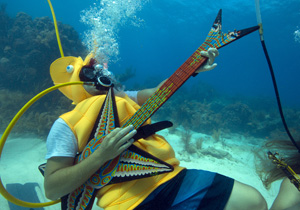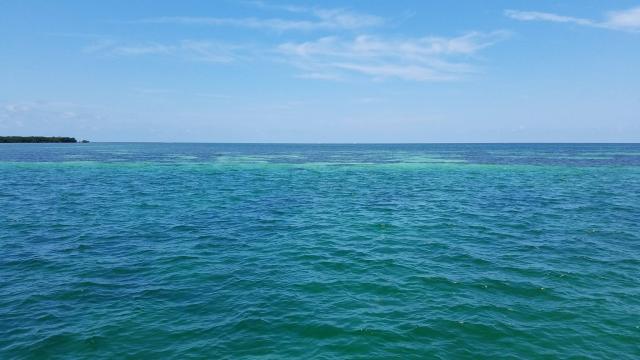Lower Keys Diving Reveals Reef and Wreck Attractions
In the Florida Keys, the continental United States’ only living coral barrier reef lies just a few kicks from the surface, with much shallow, easy reef diving.
Lower Keys divers have the crew of the British frigate H.M.S. Looe to thank for one of the most beautiful shallow reefs. The Looe ran hard aground in 1744, lending its name to a reef that's like no other in the Keys.
Looe Key has been federally protected for more than 35 years, with prohibitions on spear or surface fishing and shell collecting. Divers and snorkelers can explore a variety of structures. Patch reefs and spur and groove formations range from 5 to 35 feet, appealing to both novices and those with advanced experience.
Perhaps the greatest diversity of fish species in the Keys is found among the corals and sea fans of Looe Key. From Florida Bay, snook and permit can be spotted, while arrow crabs, trumpet fish, brittle stars and the usually rare octopus also can be found in nooks and crannies. Sea turtles occasionally make a curious pass through.
Each year in July, divers and snorkelers gather and celebrate at Looe Key Reef during the Underwater Music Festival, a subsea concert that promotes reef protection.
“The festival is a way to celebrate the coral reef, and we celebrate it by looking for a balance between protection of the reef and public enjoyment,” said festival co-founder Bill Becker. “The more people realize what’s down there and enjoy it, the more they’re likely to protect it.”
Easily accessible and in proximity to the spectacular underwater beauty of Looe Key Reef and American Shoal, southwest of Big Pine Key, is the largest wreck available for sport diving in the Lower Keys.
The 210-foot Adolphus Busch was intentionally sunk Dec. 5, 1998, in 112 feet of water.
The ship was scuttled by drilling 12 holes for water to pump into its hull and sink it. It settled upright and in perfect condition on a sandy bottom, with its wheelhouse at 70 feet and main deck at 90 feet. Hatches and portholes were removed, but the ship remains otherwise intact. The 12 large holes provide safe, easy access into it.
Built in Scotland in 1951 and previously called the London, Topsail Star, Windsor Trader and Ocean Alley, the short-haul island freighter was christened Adolphus Busch Sr. by the Anheuser-Busch brewery founder's grandson, Adolphus Busch IV, an avid diver and fisherman.
Recently on the Busch, divers with Looe Key Dive Resort captured video with huge southern stingrays, reef sharks and massive schools of tarpon populating the wreck.
Below schools of baitfish, 250- to 450-pound goliath grouper guard a colorful spectrum of snappers, amberjacks, grunts, blue runners, barracuda, sharks and massive schools of juveniles.
For more information about diving in the Lower Keys, visit fla-keys.com/lower-keys/diving/.
Social: Facebook • Twitter • Instagram • Youtube • Keys Voices blog
Looe Key Reef has been federally protected for more than 35 years, with prohibitions on spear or surface fishing and shell collecting. Pic: Looe Key Dive Resort

Each year in July, divers and snorkelers gather and celebrate at Looe Key Reef for the Underwater Music Festival to promote reef protection.


